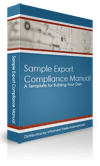Dual Use Export Licensing Under the EAR
Dual Use Export Licensing Under the EAR
Under the Export Administration Regulations (EAR), the Bureau of Industry and Security – of the US Department of Commerce – regulates the export of commercial items that have both commercial and military applications, or that otherwise have strategic value to the United States. These items are commonly referred to as “dual-use” items.
It is worth noting that the EAR does not exclusively control the export, re-export, or transfer of dual-use items. The EAR controls items with purely commercial application, items with mixed commercial and military application, and items with purely military application.
Certain regulated dual-use items must be licensed for legal export, re-export, or transfer. Dual-use export licensing under the EAR can be a bit complicated, however, so let’s try and understand the process step-by-step.
Licensing Under the EAR
Unlike licensing under the International Traffic in Arms Regulations (ITAR), which focuses primarily on the product classification of the export-ready item, licensing under the EAR is somewhat more complex. Whether a dual-use license under the EAR is required depends on a variety of factors, including but not limited to the product classification, technical characteristics, the export destination, and the end-use and end-user activity.
Though exporters are encouraged to self-classify their export items, they are entitled to request the Directorate of Defense Trade Controls (which implements ITAR) to make a decision on whether a particular item falls under ITAR or EAR jurisdiction.
Bear in mind that registration is not required in order to seek export authorization under the EAR. You can apply for export authorization directly.
The Commerce Control List
The Commerce Control List (CCL) serves as an entry-point for determining whether a particular item must be licensed for export or re-export under the EAR. If a particular item’s category appears on the CCL, then it likely requires a license for legal export. The CCL can be accessed directly through the website of the Bureau of Industry and Security.
Do be aware that there is some overlap between the United States Munitions List (regulated by ITAR) and the CCL. If an item appears in both lists, then the Munitions List (and ITAR) will take precedence.
If the category for a particular export item is listed on the CCL and comes under the ambit of the EAR, then the next step is to determine the Export Control Classification Number (ECCN) for the item, which indicates the item category, sub-category, and item order. The ECCN itself determines the particular license requirements and controls that the item will be subject to. The ECCN is generally self-identified by the exporter, but if you are confused about the correct ECCN designation for a particular item, you can request the Bureau of Industry and Security to send an advisory opinion on classification (and even on licensing requirements).
Not Listed on the CCL
If an item that you intend to export is not listed on the CCL, it may be designated as an EAR99 item. EAR99 items generally don’t require a license based off their classification, but may require a license depending on a number of other factors, including but not limited to the following…
Country of Import
Certain countries (i.e., embargoed countries) require licensing even if the item would not normally require a license for export.
Prohibited End-User
There are certain entities that are “prohibited end-users.” Even if the item is being exported to a country for which a license is not required, the ultimate end-user may be counted among prohibited entities under current regulation. The list of parties/entities whose presence can trigger a license requirement under the EAR may be found here.
Prohibited Activities
If the dual-use item will be used for certain prohibited activities, such as those relating to the development of missile or chemical weaponry, then a license will be required – even if the item is not listed on the CCL.
No License Required (NLR) Countries
Even if a particular dual-use item is listed on the CCL, you may not have to obtain a license for export if the country that will receive the export is deemed an NLR country. Applicable NLR countries are listed in the Commerce Country Chart, which can be found here.
License Exceptions
Before you continue with the process of obtaining a license, you should make sure that no license exceptions apply to your particular item and circumstances. There are several license exceptions that may apply, so keep them in mind as you move forward. The following is a non-exhaustive list.
Limited Value Items
As per the EAR, export items that are valued below a certain amount do not require a license. Use the ECCN as a reference once you have determined the correct ECCN number for the item you intend to export.
Civilian End-User in Certain Countries
Items (controlled for national security reasons) exported to civilian end-users in specified countries may be eligible for a license exception.
Transit of Items
Items being moved in transit may qualify for a license exception so long as they return to the United States, as such activity constitutes a “temporary” export.
Exhibition of Items
Exhibitions and demonstrations of certain items may be eligible for a license exception, so long as you are able to maintain possession of the regulated item while outside of the United States.
Maintenance and Repair
Depending on the circumstances and the item classification, you may be able to get a license exception for sending replacement parts, maintenance tools, and other supplementary repair items for an already-exported item.
Posted on January 4th, 2017 by admin
Filed under: EAR, ITAR

